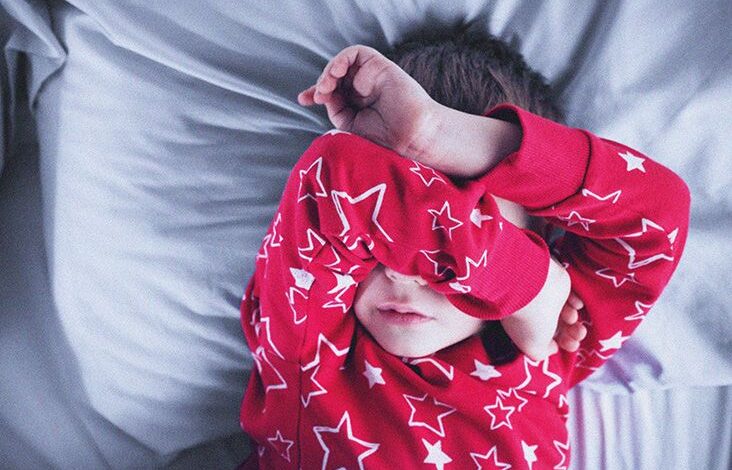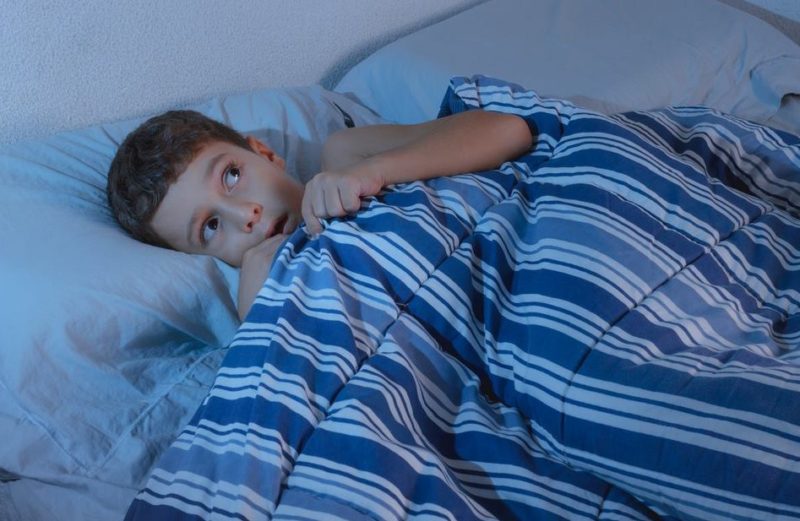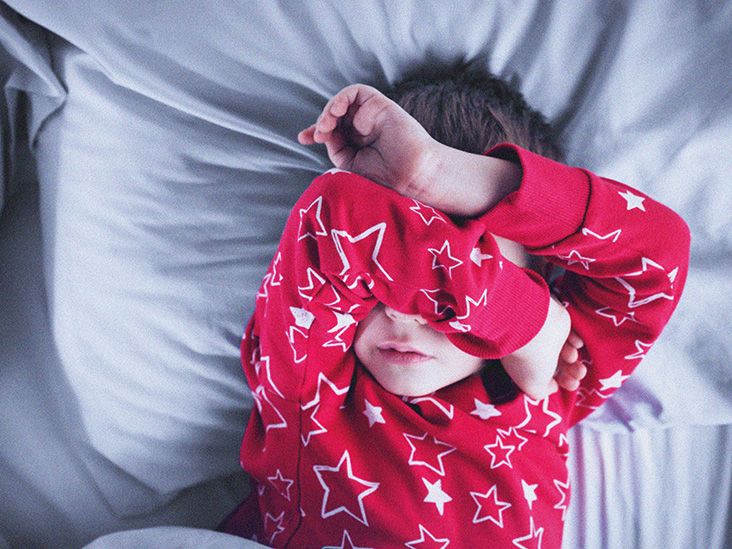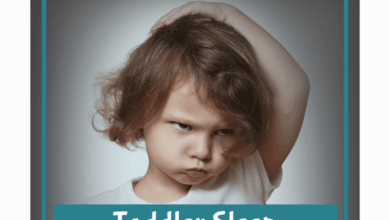
Night terrors in kids and babies are frightening experiences for both children and parents. These episodes often involve intense fear and distress, leaving parents unsure of how to respond. Understanding the difference between night terrors and nightmares, the potential triggers, and the appropriate responses can significantly ease the situation. This comprehensive guide explores the complexities of night terrors, offering insights into causes, symptoms, and effective strategies for managing these episodes and promoting healthy sleep.
This article dives deep into the various aspects of night terrors, providing a detailed explanation of what they are, how they differ from nightmares, and why they might occur. We’ll also cover how to recognize the signs, how to react safely and effectively during an episode, and long-term strategies for prevention and support. Ultimately, our aim is to empower parents with the knowledge and tools to navigate these challenging moments and help their child sleep soundly.
Defining Night Terrors in Children
Night terrors are frightening experiences that can disrupt a child’s sleep. Understanding the differences between night terrors and nightmares is crucial for parents to respond appropriately and help their child feel safe. This understanding also empowers parents to seek professional help if needed.Night terrors are a distinct sleep disorder characterized by intense fear and panic, often accompanied by physical symptoms.
They are different from nightmares, which typically involve frightening dreams that a child can recall upon waking. Importantly, while both can be disruptive, the nature of the experience and the child’s state of mind during the event differ significantly.
Night Terrors vs. Nightmares
Night terrors and nightmares, while both disruptive, differ significantly in their characteristics. Nightmares typically occur during REM (Rapid Eye Movement) sleep, a stage of sleep associated with vivid dreaming. Conversely, night terrors happen during non-REM sleep, usually in the deepest stages. This distinction is vital to understanding the differing responses.
Physical and Behavioral Characteristics
Night terrors in children and babies manifest differently based on age. Infants might exhibit sudden, intense crying or thrashing movements, while older children might sit up in bed, scream, and appear to be extremely frightened. A notable physical characteristic is the child’s difficulty in being awakened or comforted during a night terror episode. They often have wide eyes and appear to be fully alert, but cannot recall the event upon waking.
Their breathing may be rapid and shallow, and their heart rate may increase. Children experiencing night terrors may exhibit agitation and confusion upon awakening, with no recollection of the episode.
Age Prevalence of Night Terrors
Night terrors are most prevalent in children between the ages of 3 and 8. This age range corresponds to the developmental stage where deep sleep cycles are prominent and sleep patterns are still developing. While they can occur earlier or later, this period sees a higher incidence. In very young children, these episodes can be difficult to distinguish from other sleep disturbances.
Duration and Frequency of Night Terrors
Night terrors typically last from a few minutes to half an hour. The frequency of these episodes varies significantly. Some children experience them only occasionally, while others may have them several times a week. Importantly, these episodes are often self-limiting and resolve as the child grows and their sleep patterns mature.
Comparison Table: Night Terrors vs. Nightmares
| Characteristic | Night Terrors | Nightmares |
|---|---|---|
| Onset | Deep sleep stages (non-REM) | REM sleep |
| Duration | Few minutes to half an hour | Variable, but often shorter |
| Child’s Awareness | Limited or no awareness upon waking | Aware and can recall the dream |
| Parent’s Response | Gentle reassurance and avoiding attempts to awaken the child forcefully. | Comfort and reassurance, allowing the child to process the dream. |
Identifying Potential Causes
Understanding the triggers behind night terrors in children is crucial for effective management and support. These episodes, while frightening for both child and parent, often stem from a combination of factors rather than a single cause. Pinpointing potential contributors allows for targeted interventions to minimize future occurrences and ensure a peaceful night’s sleep.Identifying the underlying causes of night terrors is vital for implementing appropriate strategies to prevent and manage them.
Often, a multi-faceted approach, addressing sleep patterns, emotional well-being, and environmental factors, is necessary. By carefully considering potential triggers, parents and caregivers can work towards creating a more conducive sleep environment for their child.
Sleep Disorders, Night terrors in kids and babies
Sleep disorders play a significant role in triggering night terrors. Conditions like sleep apnea, characterized by pauses in breathing during sleep, can disrupt the delicate balance of the sleep cycle, increasing the likelihood of night terror episodes. The body’s oxygen deprivation during these pauses can lead to arousal and anxiety during sleep, which may manifest as night terrors.
Restless legs syndrome (RLS), another sleep disorder, is associated with uncomfortable sensations in the legs, prompting movement and disruption of sleep. These disruptions can be a significant factor in causing night terrors.
Emotional Factors
Stress, anxiety, and other emotional factors are key contributors to night terrors. A child experiencing significant stress, such as a change in routine, school pressure, or family issues, might manifest this stress through night terrors. Similarly, anxiety, fear, or emotional trauma can disrupt sleep and trigger these episodes. It’s important to recognize that emotional well-being is intricately linked to sleep quality and can directly influence the occurrence of night terrors.
Environmental Factors
Environmental factors, such as temperature and noise levels, can also contribute to night terrors. A child sleeping in a room that is too hot or too cold might experience discomfort, leading to sleep disturbances and night terrors. Similarly, excessive noise, whether from outside sources or within the home, can disrupt sleep and increase the likelihood of night terrors.
A quiet and comfortable environment is essential for promoting restful sleep and reducing the risk of night terrors.
Potential Causes and Symptoms Table
| Potential Cause | Associated Symptoms |
|---|---|
| Sleep apnea | Loud snoring, pauses in breathing during sleep, restlessness during sleep, daytime sleepiness, irritability |
| Restless legs syndrome | Uncomfortable sensations in the legs, urge to move legs, difficulty falling asleep, restless sleep |
| Stress/Anxiety | Difficulty concentrating, changes in appetite, irritability, clinginess, excessive worrying, nightmares |
| Environmental factors (e.g., temperature, noise) | Waking up during the night, difficulty falling back to sleep, restless sleep, discomfort |
Recognizing Symptoms and Behaviors

Night terrors, a frightening sleep disorder, can leave parents puzzled and concerned. Understanding the physical and behavioral manifestations is crucial for accurate identification and appropriate intervention. Recognizing these symptoms allows for prompt action and helps differentiate night terrors from other sleep issues or medical conditions.
Common Physical Manifestations
Night terrors are often accompanied by noticeable physical signs. Children experiencing a night terror may exhibit heightened physiological responses, including rapid heart rate and breathing. Increased muscle tension, sometimes manifesting as thrashing or flailing, is another common physical sign. Perspiration and a visibly agitated state are also frequently observed. These physical responses reflect the intense emotional distress experienced during the episode.
Behavioral Manifestations During an Episode
Children experiencing a night terror often display distinctive behavioral patterns. Screaming, thrashing, and flailing are common, sometimes accompanied by intense vocalizations and crying. Children may appear confused or disoriented upon waking, with no memory of the episode. The child’s eyes may be wide open, and their breathing may be rapid and shallow. They may be difficult to console or calm.
Distinguishing Night Terrors from Other Sleep Disturbances
Differentiating night terrors from other sleep disorders is essential for proper management. Night terrors typically occur during the deepest stages of non-REM sleep, unlike nightmares, which occur during REM sleep. Distinguishing factors include the child’s level of responsiveness and the degree of agitation. Nightmares usually involve recognizable fears and are recalled upon waking, whereas night terrors are less likely to be remembered.
A child experiencing a nightmare will typically be more easily soothed, while a child experiencing a night terror may be unresponsive to attempts at comfort.
Distinguishing Night Terrors from Other Medical Conditions
Differentiating night terrors from other medical conditions requires careful observation and, if necessary, consultation with a healthcare professional. Conditions like febrile seizures, or other neurological issues, may present with similar symptoms. A thorough medical evaluation can rule out underlying medical concerns. It is important to note that while night terrors can be distressing, they are typically not a sign of a serious medical problem.
However, consistent occurrences or worsening symptoms warrant medical attention.
Symptom Severity Levels
| Symptom | Mild | Moderate | Severe |
|---|---|---|---|
| Vocalization | Whining, whimpering | Screaming, yelling | High-pitched screaming, thrashing |
| Motor Activity | Fidgeting, slight movements | Flailing, thrashing, kicking | Violent thrashing, striking, injuries |
| Response to Intervention | Can be soothed with gentle touch | Unresponsive to attempts to comfort | Highly unresponsive and resistant to any form of intervention |
| Duration | Few seconds to minutes | Minutes to several minutes | Extended period lasting 15 minutes or longer |
Symptoms can vary significantly from child to child, and the severity can fluctuate. Parents should document the frequency, duration, and specific symptoms to share with their pediatrician for proper assessment.
Responding to Night Terrors
Night terrors, while frightening for both parents and children, are a normal, albeit unsettling, part of a child’s development. Understanding how to respond appropriately can significantly reduce the distress for everyone involved. Learning the best course of action is crucial for creating a safe and supportive environment for your child during these episodes.A crucial aspect of dealing with night terrors is understanding that they are not a sign of a deeper problem or something to be overly concerned about in the long term.
They are often related to the brain’s maturation process during sleep. They typically involve intense fear, screaming, and confusion, but they don’t typically involve conscious memories of the event afterward. By learning how to react calmly and safely, parents can help alleviate their child’s fear and discomfort, both during and after the episode.
Night terrors in kids and babies can be a real worry for parents. While there’s no direct link between lead exposure and night terrors, it’s crucial to prioritize your family’s well-being by understanding and mitigating potential risks. Learning 5 ways to reduce your exposure to lead, like checking for lead paint in your home and using lead-safe products, can significantly improve the overall health of your children and potentially even reduce the likelihood of some sleep disturbances.
Ultimately, prioritizing a healthy environment for your children is key to their overall well-being and reducing instances of night terrors. 5 ways to reduce your exposure to lead
Safe Management Strategies
Effective management of night terrors involves a multi-faceted approach that prioritizes the child’s safety and minimizes any potential harm. It’s important to approach these episodes with a calm and reassuring demeanor, as your reaction significantly impacts your child’s experience.
Ensuring Child Safety During an Episode
It is crucial to avoid physical interaction during a night terror episode. Your child is not fully conscious during these episodes, and attempting to intervene physically could cause harm to both of you. Instead, focus on creating a safe space for them. Keep a close watch to ensure the child does not hurt themselves, by avoiding hazards such as stairs or sharp objects.
Avoiding Physical Interaction
Physical intervention during a night terror is generally counterproductive and potentially harmful. Children experiencing night terrors are often in a state of heightened physiological arousal, and physical interaction can worsen their distress. Instead of trying to wake them, it’s best to allow the episode to run its course, keeping a safe distance while ensuring their physical well-being.
Reassurance and Comfort After the Episode
After the night terror has subsided, providing reassurance and comfort is vital. Speak softly and gently to your child, offering words of support and affection. Acknowledging their distress without judgment can help them feel understood and secure. Avoid interrogating them about the episode, as they won’t remember it. Focusing on calming them down and making them feel safe and loved is the best approach.
Things to Avoid During a Night Terror Episode
- Trying to wake the child forcefully. Attempting to rouse a child experiencing a night terror is often unsuccessful and can increase their anxiety and distress. This is a key aspect of understanding night terrors.
- Talking or reasoning with the child. Children during night terrors are not cognitively engaged in the same way they are during waking hours. Trying to engage in conversation or logic during an episode is ineffective and can increase the child’s confusion and fear.
- Attempting to restrain the child. A child experiencing a night terror is often highly agitated and might react unpredictably. Physical restraint is unnecessary and could lead to injury for both the child and the caregiver.
- Providing explanations or information. Children experiencing night terrors are not capable of processing complex information. Avoid offering explanations or attempts to clarify the situation during the episode.
Managing Night Terrors in the Long Term
Night terrors, while often frightening for both children and parents, are typically not a cause for long-term concern. However, consistent strategies for managing sleep and reducing stress can significantly lessen the frequency and intensity of these episodes. Understanding the underlying factors and implementing proactive measures is key to improving the child’s overall sleep quality and well-being.Long-term management of night terrors focuses on creating a supportive sleep environment and addressing potential contributing factors.
By consistently implementing these strategies, parents can help their children develop healthy sleep habits and reduce the likelihood of future night terrors.
Preventing Night Terrors
Night terrors are often linked to sleep disruptions and underlying anxieties. Proactive measures to prevent them focus on creating a nurturing sleep environment that promotes restful sleep. A consistent sleep schedule, a calming bedtime routine, and stress reduction techniques are vital components of this strategy.
Creating a Consistent Sleep Schedule
Establishing a predictable sleep schedule helps regulate the body’s natural sleep-wake cycle. A consistent bedtime and wake-up time, even on weekends, strengthens the body’s internal clock, promoting better sleep quality. For example, if a child typically wakes up at 7:00 am, maintaining this schedule, even on weekends, will help regulate their circadian rhythm.
Night terrors in kids and babies can be a real worry for parents. It’s a fascinating area of study, especially when considering how our growing awareness of loneliness, particularly among older generations, as discussed in this article about the loneliness epidemic why are we in the middle of a loneliness epidemic one reason could be an aging population 2 , might subtly impact the emotional development of children.
Ultimately, understanding these sleep disturbances helps us better support our little ones and potentially even better understand the bigger picture of human connection.
- Set a regular bedtime and wake-up time, adhering to it consistently, even on weekends, to help regulate the body’s natural sleep-wake cycle.
- Gradually adjust the sleep schedule if needed, ensuring a smooth transition to the new routine.
- Allow sufficient sleep time based on the child’s age and developmental needs.
A Calming Bedtime Routine
A calming bedtime routine helps signal to the body that it’s time to wind down. Activities like a warm bath, reading a book, or gentle music can create a relaxed atmosphere, promoting sleep. Avoid stimulating activities before bedtime, such as intense play or watching exciting shows.
- Establish a relaxing bedtime routine, incorporating activities like a warm bath, gentle music, or quiet reading.
- Ensure the routine is consistently followed each night to reinforce the sleep signal.
- Avoid stimulating activities or screens before bedtime.
Reducing Stress and Anxiety
Stress and anxiety can significantly impact sleep quality and contribute to night terrors. Finding healthy ways to manage stress and anxiety is crucial for a child’s overall well-being. This may include relaxation techniques, mindfulness exercises, or engaging in calming activities.
- Encourage healthy stress-management techniques, such as deep breathing exercises, mindfulness, or engaging in calming activities.
- Identify potential stressors in the child’s life, such as school pressures or family conflicts.
- Support the child in developing coping mechanisms for managing stress.
Establishing a Peaceful Sleep Environment
A peaceful sleep environment promotes relaxation and reduces distractions that might disrupt sleep. This includes a dark, quiet, and cool room. Ensure the child’s comfort and safety in their sleeping area.
- Maintain a dark, quiet, and cool room temperature conducive to sleep.
- Ensure the child’s comfort and safety with appropriate bedding and sleepwear.
- Reduce noise and light distractions in the child’s bedroom.
Summary of Prevention Strategies
| Prevention Strategy | Details |
|---|---|
| Consistent Sleep Schedule | Regular bedtime and wake-up times, even on weekends, to regulate the body’s sleep-wake cycle. |
| Calming Bedtime Routine | Relaxing activities like a warm bath, reading, or gentle music to signal the body to wind down. |
| Stress Reduction | Encourage healthy coping mechanisms like deep breathing or mindfulness to manage stress and anxiety. |
| Peaceful Sleep Environment | Dark, quiet, and cool room to promote relaxation and reduce distractions. |
Seeking Professional Help
Navigating a child’s night terrors can be a deeply concerning experience for parents. While many cases resolve on their own with supportive measures, understanding when professional help is crucial is essential for ensuring your child’s well-being and a positive outcome. Knowing the signs and symptoms, and the potential underlying causes, will help you determine the best course of action.Professional intervention is often necessary when night terrors become frequent, disruptive, or when they are accompanied by other concerning behaviors or symptoms.
For instance, if a child experiences multiple episodes per week, or if the terrors significantly impact their daily functioning, seeking expert advice is recommended. Furthermore, if a child exhibits unusual behaviors during or after the night terror episodes, like memory loss or disorientation, it warrants professional evaluation.
When to Consult a Pediatrician
A pediatrician is a vital first point of contact for any health concerns related to a child. They can assess general health, rule out potential underlying medical conditions, and offer guidance on sleep hygiene practices. Consulting a pediatrician is especially important if the night terrors are accompanied by fever, other illnesses, or if the child exhibits unusual physical changes or unexplained behaviors.
They can also help rule out underlying medical issues that might mimic night terror symptoms.
Night terrors in kids and babies can be pretty scary for parents. While there’s no magic pill yet, recent advancements like the work being done by a company developing a pill to replace injected drugs for various conditions here might someday offer a new avenue for treating similar issues. Hopefully, these breakthroughs will lead to better solutions for helping kids sleep soundly through the night, free from these frightening episodes.
The Role of a Sleep Specialist
A sleep specialist possesses specialized knowledge in sleep disorders and their management. They are equipped to conduct comprehensive sleep evaluations and offer tailored treatment strategies. When a pediatrician suspects a sleep disorder beyond typical night terrors, or if a child’s symptoms are complex, a sleep specialist can provide valuable insights and create a personalized treatment plan. This may involve specialized sleep studies or therapies, particularly if the night terrors are impacting the child’s overall health and development.
Potential Underlying Medical Conditions
Certain medical conditions can manifest with symptoms similar to night terrors. For instance, a child with an undiagnosed seizure disorder may experience episodes resembling night terrors, complete with agitation and confusion. Similarly, certain neurological conditions or metabolic imbalances can present with behavioral disturbances that overlap with night terrors. A medical evaluation is crucial to rule out these possibilities and ensure the child receives the appropriate care.
Sleep Studies and Other Diagnostic Tools
Sleep studies, also known as polysomnography, provide detailed recordings of brain activity, heart rate, breathing patterns, and eye movements during sleep. These studies can help identify sleep disorders, such as sleep apnea or other sleep disturbances, that might be contributing to or mimicking night terrors. Other diagnostic tools, such as questionnaires or sleep diaries, may help to assess the child’s sleep habits, daily routines, and overall well-being, allowing the specialist to gather a comprehensive picture of the child’s sleep patterns and associated factors.
Finding Qualified Professionals
Locating qualified pediatricians and sleep specialists can be facilitated by contacting local hospitals, sleep clinics, or organizations specializing in child health. Online directories and medical associations also offer resources for finding specialists in your area. When selecting a specialist, consider their experience with children, their knowledge of sleep disorders, and their approach to patient care. A positive doctor-patient relationship is crucial for effective management of the condition.
Illustrative Examples of Night Terrors

Understanding night terrors in children requires looking at various scenarios. Night terrors, while frightening for both child and parent, are typically not a sign of a serious underlying issue. They are a common sleep disorder, and with the right understanding and approach, they can be effectively managed.Night terrors are a sudden awakening characterized by intense fear and panic, typically occurring during deep sleep stages.
Parents often find it alarming to witness their child in such distress, but it’s crucial to remember that the child isn’t truly awake during this episode.
A Child Experiencing a Night Terror
A 5-year-old named Liam was asleep in his bed when he suddenly sat up, eyes wide with terror. He was screaming and thrashing around, his breathing rapid and shallow. He was clearly in distress. Liam’s mother, hearing the commotion, rushed to his side. He was confused and disoriented, unable to recall anything that had happened.
He seemed frightened and upset, but he was also quite compliant when calmed down. After a few minutes of soothing words and gentle reassurance, Liam drifted back to sleep, unaware of the episode that had just occurred. This demonstrates a typical night terror symptom set – sudden awakening, intense fear, and confusion upon waking.
Environmental Triggers of Night Terrors
A 3-year-old named Maya frequently experienced night terrors. Her room was dimly lit, with a slightly overwhelming amount of toys scattered around. The loud noises of the nearby playground equipment were clearly heard. The constant ambient noise, combined with the overstimulation from the toys, often led to disrupted sleep patterns. A consistent bedtime routine and a calmer, less stimulating bedroom environment could have helped mitigate these triggers.
This example highlights the importance of considering the environmental factors that may contribute to a child’s night terrors.
Parental Response and Night Terrors
A 4-year-old named Chloe experienced a night terror. Her father, instead of calmly comforting her, became frustrated and tried to physically restrain her. This reaction only escalated her fear and distress. Her father was afraid of his child’s screaming and his reaction made the situation worse. This illustrates the detrimental impact a parent’s anxious response can have on a child experiencing a night terror.
A calm, reassuring presence is crucial in helping a child through this episode.
Importance of a Consistent Bedtime Routine
A 6-year-old named Ethan followed a consistent bedtime routine each night. This included a warm bath, reading a book, and quiet playtime. This routine helped regulate his body’s natural sleep-wake cycle, leading to fewer instances of night terrors. Ethan’s experience demonstrates the significance of a consistent bedtime routine in promoting healthy sleep patterns and potentially reducing the frequency of night terrors.
A predictable routine helps signal to the body that it’s time to sleep, making it easier to transition into deep sleep.
Last Point: Night Terrors In Kids And Babies
In conclusion, understanding night terrors in kids and babies is crucial for both parents and healthcare professionals. By recognizing the signs, understanding potential causes, and implementing appropriate responses, parents can effectively manage these episodes. Creating a safe, consistent sleep environment, and seeking professional help when necessary, are all vital components of a comprehensive approach. Remember, you’re not alone in dealing with this, and with the right knowledge and support, you can navigate these experiences with confidence.





